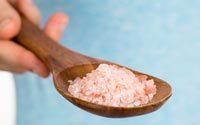MAY 2015
WHAT’S NEW
ORAL HYGIENE & THE HEALTH OF THE BODY

Living with a chronic health condition can have detrimental effects on oral health. “For example, many medicines can reduce the amount of saliva in your mouth, resulting in dry mouth,” says Dr. David Albert, associate professor of clinical dentistry at the Columbia University College of Dental Medicine. “Patients with asthma often breathe through their mouths, which can result in dry mouth, increased plaque formation, and gingivitis.” (1)
As previously mentioned, oral health has been related to several other health concerns.
DIABETES. One complication of diabetes is gum disease that results from impaired blood flow through the blood vessels. When the gums don’t receive sufficient blood flow, they become weak and vulnerable to infection. If diabetes is not properly managed, high glucose levels in the mouth will promote bacterial growth.
HEART DISEASE. Chronic bacterial infection of the gums, or periodontal disease (PD), has been linked to increased risk of heart attack and stroke. Researchers are still examining the exact reasons for this connection, but it has been suggested that PD increases inflammation, a risk factor for heart disease. It’s also possible that bacteria from the mouth travels into the bloodstream and adds to buildup of plaque in the arteries. While there isn’t a direct cause-and-effect relationship, both PD and heart disease share common risk factors including smoking and diabetes.
ARTHRITIS. In a recent small study, bacteria from the mouth was found in synovial (joint) fluid in people with knee arthritis. For some participants in these studies, there was a genetic match between the bacteria in the mouth and that found in the joint fluid. Further research is required.
ORAL HYGIENE HABITS THAT BENEFIT THE WHOLE BODY
You are the best advocate for the health of your teeth and mouth. On a weekly basis, check inside your mouth for swollen or bleeding gums; foul mouth odor that does not go away; cracked, chipped, or discolored teeth; tooth and/or jaw pain; and sores or lesions on the gums, cheeks, or tongue. Any of these can be symptomatic of more serious health problems and should be brought to the attention of your doctor. The best way to prevent such problems from developing is to maintain healthy dental hygiene habits:
- Eat a balanced diet without excessive sweets. As far back as the 1940s, researchers like Weston A. Price observed the role of nutrition in dental and physical health. Price was one of the first to conclude that “foods of commerce,” such as flour, sugar, and processed food products cause nutritional deficiencies (especially in vitamins and minerals) that result in dental and general health problems.
- Don’t smoke or use smokeless tobacco products.
- Brush at least twice daily—after breakfast and before bedtime. Floss daily. Brush the tongue. Replace your toothbrush at least every three to four months.
- Drink plenty of water.
- Chew xylitol gum between meals, especially if you cannot brush teeth. Chewing helps dislodge foods between the teeth and increases saliva flow to neutralize mouth acids.
- Schedule regular dental visits, usually every six months for a cleaning and check up.
REFERENCES
- (1) Simple Steps to Better Dental Health. “Eight Steps to Dental Health.” Updated June 27, 2014.
- American Heart Association. “Dental Health and Heart Health.” Updated December 20, 2013.
- Case Western Reserve University. “Joint Failures Potentially Linked to Oral Bacteria.” ScienceDaily. April 18, 2012.
- Live Science. “How Oral Hygiene Affects the Rest of You.” October 4, 2013.
- Témoin, S., A. Chakaki, et.al. “Identification of Oral Bacterial DNA in Synovial Fluid of Patients with Arthritis with Native and Failed Prosthetic Joints.” Journal of Clinical Rheumatology 18, no. 3 (April 2012): 117-121.
- The Weston A. Price Foundation. “Nutrition, Fluoridation, and Dental Health.” April 28, 2014.
FOOD FOR THOUGHT. . .
“Eat healthily, sleep well, breathe deeply, move harmoniously.” – Jean-Pierre Barral
FOODS FOR HEALTHY TEETH

WORST FOODS FOR TEETH
Hard candies and mints, fruit “chews,” dried fruit bits (except raisins), cookies, pretzels, and potato chips all have high sugar content that bacteria feeds on. Soda, sports drinks, sweetened coffee and tea contribute to the breakdown of enamel. Sugar-substitutes such as Splenda and aspartame don’t react on teeth the same way as natural sugar, but these artificial sweeteners aren’t a healthy staple for anyone’s diet and are quite detrimental. Read food labels: Sugar-free does not always mean a food does not contain sugar; it may mean additional sugar has not been added. Many sugar-free products contain fructose, sucrose, maple or rice syrup, which can be just as bad for teeth.
BEST FOODS FOR TEETH
Calcium and phosphorous are two nutrients thought to protect tooth enamel and to remineralize teeth. Some great food choices include eating organic leafy greens, fish, eggs, lean meats, nuts and raw unpasteurized dairy products.
Hard, crunchy fruits and vegetables, such as apples, pears, carrots, and broccoli all have a high water content that stimulates saliva and helps wash away food particles and acid. However, citrus fruits and tomatoes are more acidic and should be eaten with other foods. When it comes to beverages, your best choice is natural spring water and organic unsweetened tea. And about those raisins … the sweet, bite-sized raisin does not contain sucrose (table sugar), plus it is rich in phytochemicals that, in some studies, have been shown to affect the growth of bacteria associated with gum disease.
If you are interested in learning more about remineralizing your teeth, check out this great Easy Remineralizing Toothpaste Recipe and article.
REFERENCES
- American Dental Association. “Good Foods for Dental Health.” Accessed March 2015.
- Nunn, M.E., N.S. Braunstein, et.al. “Healthy Eating Index Is a Predictor of Early Childhood Caries.” Abstract. Journal of Dental Research 88, no. 4 (April 2009): 361-6.
- Science Daily. “Raisins as a Functional Food for Oral Health.” June 13, 2005.
RECIPE: SLOW-COOKER CHICKEN STOCK BONE BROTH
Yields: 3 quarts, Prep time: 20 minutes, Cook time: 14 hours 30 minutes

- 3 pounds bone-in chicken parts and gizzards
- 12 cups filtered water
- 1 tablespoon apple cider vinegar
- 1 yellow onion, peeled and quartered
- 3 large carrots, cut into large dice
- 4 cloves garlic, smashed
- 2 stalks celery with leaves
- 2 bay leaves
- 1 teaspoon sea salt
- 1/2 teaspoon cracked black pepper
- 1 bunch fresh parsley
Place the water and chicken parts in a slow cooker and cook on high for 2 hours. Skim off any foam from the surface and remove the chicken. Shred the meat off the bones, and set the meat aside. Return the bones to the pot.
Reduce slow cooker to low. Add all the remaining ingredients, except the parsley, to the pot and cook on low for 12 hours. Turn off the pot, skim the fat off the top, stir in the parsley, and cover for 30 minutes.
Strain the broth through a fine-mesh sieve or cheesecloth. Store in the refrigerator or freezer for later use. Scoop off any solidified fat before using.
Source: Danielle Walker, AgainstAllGrain.com
MINERALS FOR YOUR HEALTH

Consuming too much or too little of any mineral can have negative effects on health. For most people in good health, a safe range for consumption of minerals has been established (see Resources). Personal variation comes into play depending on one’s region, history of illness, and dietary restrictions.
Conventional wisdom dictates that the best way to get the minerals (and vitamins) your body needs is to eat a balanced diet that includes a wide variety of foods. However, recent research shows that while the vitamin content of food remains relatively stable over time, mineral content is becoming depleted. There are many reasons for this; erosion, farming practices, pollution, and even the way we cook can affect the nutrient density of both conventionally and organically harvested foods. Consequently, holistic health practitioners may recommend trace mineral supplementation even for someone eating the healthiest diet possible.
RESOURCES
- Bionutrient Food Association.
- Human Performance Resource Center. “Food Sources of Minerals.”
- Recommended Intake and Functions of Minerals.
REFERENCES
- Coulston, A., C. Boushey, and M.G. Ferruzzi, eds. Nutrition in the Prevention and Treatment of Disease. Oxford: Academic Press, 2013.
- Davis, D.R. “Declining Fruit and Vegetable Nutrient Composition: What Is the Evidence?” HortScience 44, no. 1 (February 2009): 15-19.
- Foundation for Alternative and Integrative Medicine. “Sustainable Agriculture and Nutrient Dense Foods.” Accessed March 2015.
- Kabata-Pendias, A. Trace Elements in Soils and Plants. Boca Raton: CRC Press, 2011.
- Marler, J.B., and J. Wallin. “Human Health, the Nutritional Quality of Harvested Food and Sustainable Farming Systems.” Nutrition Security Institute White Paper. Bellevue: WA, 2006.
- Thomas, D. “A Study on the Mineral Depletion of the Foods Available to Us as a Nation over the Period 1940 to 1991.” Nutrition and Health 17, no. 2 (April 2003): 85-115.
NATURE’S POTENT HEALER: NEEM (Azadirachta Indicas)
More than 140 compounds have been isolated from different parts of neem. All parts of the tree—bark, leaves, flowers, seeds, fruits, and roots can be used for the treatment of a variety of conditions. Medicinal applications of neem range from fever and inflammation to skin diseases and dental care. The leaf and bark, and their derivatives, have properties that demonstrate anti-inflammatory, anti-ulcer, antifungal, antibacterial, antiviral, antioxidant, and anticarcinogenic healing effects.
Neem remedies and neem-based products are appealing because they do not contain harsh chemicals and have varied uses for general health and well-being. Neem extracts are frequently found in shampoo, toothpaste, soap, cosmetics, insect repellent, lotions and creams, and pet shampoo.

SOME OF THE COMMON MEDICINAL FORMS OF NEEM ARE:
EXTRACTS. High vitamin E content makes extracts effective in treating skin conditions such as eczema, psoriasis, acne, and skin allergies. They also have been found effective in eliminating bacterial and fungal infections. The leaf is the primary source for extracts.
BARK. The bark has potent antibacterial properties. It can be made into a fast-absorbing oil to treat recurrent skin conditions, skin infections, and wounds.
TWIGS. For centuries in India, chewing young, soft branches has been useful for preventing cavities and gum disease. In the United States, neem toothpaste and other dental products are used in holistic dental care.
SEEDS. Crushing the seeds of the fruit produces a potent oil that is predominantly used in insecticide and pesticide products. It is a safer alternative to products containing the chemical DEET. It is also a very good flea and tick repellant for animals. For people, the oil can be added to shampoos to soothe a dry, itchy scalp.
WHERE TO FIND NEEM PRODUCTS:
- Neem Tree Farms
- Discover Neem
- Neem Toothpaste
REFERENCES
- Organeem. “Neem Oil and Its Uses.” Accessed March 2015.
- Subapriya, R., and S. Nagini. “Medicinal Properties of Neem Leaves: A Review.” Abstract. Current Medicinal Chemistry – Anti-Cancer Agents 5, no. 2 (March 2005): 149-156.
- Village Volunteers. “History, Medicinal, and Practical Uses of Neem.” Accessed March 2015.
OIL PULLING

It may be an ancient health practice, but it is getting the attention of modern science. Recent studies show that oil pulling helps heal gingivitis, control plaque, and reduce microorganisms that cause bad breath. How? In a recent WebMD article, Jessica T. Emery, DMD, explains, “Most microorganisms inhabiting the mouth consist of a single cell. Cells are covered with a lipid, or fatty, membrane, which is the cell’s skin. When these cells come into contact with oil, a fat, they naturally adhere to each other.”
Start with five minutes a day; build up to 20 minutes daily. Swishing with oil is an unusual sensation—it will take some time to get used to it. Start with five minutes of daily swishing and increase by five minutes, over a few weeks.
Use small amounts of oil. You don’t need a big mouthful for oil pulling to be beneficial. If you find you are swallowing oil (which you should not do), then spit it out and use a smaller amount.
Continue routine dental care. Oil pulling should not replace routine dental hygiene. Continue to brush, floss, and use mouthwash daily.
REFERENCES
- Singh, A., and B. Purohit. “Tooth Brushing, Oil Pulling, and Tissue Regeneration: A Review of Holistic Approaches to Oral Health.” Journal of Ayurveda and Integrative Medicine 2, no. 2 (April 2011): 64–68. doi:10.4103/0975-9476.82525.
- WebMD. “Should You Try Oil Pulling?” Reviewed June 4, 2014.
GUIDING PRINCIPLES

First Do not Harm

Identify and Treat the cause

Healing Power of Nature

Doctor as Teachers

Treat the Whole

Prevention is best Medicine
Follow us on instagram
BLOG
Become an educated consumer with our Indigo Blogs and prevent dis-ease.
Our Doctors have been featured in:









